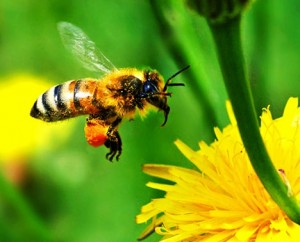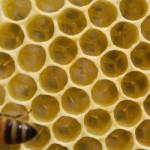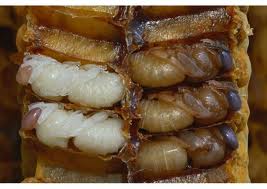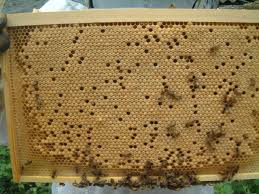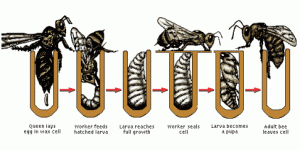 The queen honey bee, her workers and the drones all pass through three developmental stages before emerging as adult bees.These stages are the egg, larva, and pupa and the three are collectively labeled brood. While the developmental stages are similar, they do differ in duration.
The queen honey bee, her workers and the drones all pass through three developmental stages before emerging as adult bees.These stages are the egg, larva, and pupa and the three are collectively labeled brood. While the developmental stages are similar, they do differ in duration.
The majority of egg in a healthy colony are fertilised and will become female worker bees or if needed a new queen, whilst unfertilised eggs become male drones. In order for an egg to become a queen the workers will have to feed the larva large amounts of royal jelly, which appears to be the trigger for turning what would otherwise be another female worker into a queen bee.
Eggs
The queen lays a single egg in each cell that has been cleaned and prepared by the workers to raise new brood, the cell must be spotless, or she moves on to another one. If she chooses a standard worker-size cell, she releases a fertilised egg into the cell and that egg develops into a worker bee (female). But if she chooses a wider drone-size cell, the queen releases a non-fertilised egg and that egg develops into a drone bee (male). The workers that build the cells are the ones that regulate the ratio of female worker bees to male drone bees, by building smaller cells for female worker bees and larger cells for male drone bees. Worker bee cells measure 5 per inch of comb in comparison with that of drones which are 4 per inch.
Each egg is attached to the cell bottom by a mucus strand and looks like a tiny grain of rice. When first laid, the egg stands straight up on end, however, during the 3-day development period the egg begins to bend over. On the third day, the egg develops into a tiny grub and the larval stage begins.
honey bee eggs
Larvae
Healthy larvae are a glistening pearly white colour and are curled in a ‘C’ shape on the bottom of the cell. Worker, queen, and drone cells are capped with a porous bees-wax after the larvae are approximately 6, 5 1⁄2, and 61⁄2 days old, respectively. During the larval stage, they have voracious appetites and are fed by adult worker (nurse) bees while still inside their beeswax cells. The nurse bees first feed the larvae royal jelly and later they are weaned to a mixture of honey and pollen (sometimes referred to as bee bread ). If the larva is to be a queen, royal jelly will continue to be fed to it. The period just after the cell is capped is called the pre-pupal stage. During this stage the larva is still grub-like in appearance but stretches itself out lengthwise in the cell and spins a thin silken cocoon. Larvae remain pearly white, plump and glistening during this pre-pupal stage.
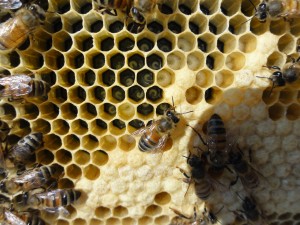
frame section showing all ages of larvae and capped pupae
Pupae
Within the individual capped cells , the pre-pupae begin to change from their larval form to adult bees. Healthy pupae remain white and glistening during the initial stages of development, even though their bodies begin to take on adult forms. Compound eyes are the first feature that begin to take on colour, changing from white to brownish-purple. Soon after this, the rest of the body begins to take on the colour of an adult bee. New workers, queens, and drones emerge approximately 12, 7 and 14 1/ ⁄ 2 days, respectively, after their cells are capped.
opened pupae cells showing developing honey bees
Brood Pattern
Healthy brood patterns are easily recognised when looking at capped brood. Frames of healthy capped worker brood normally have a solid pattern with few cells missed by the queen in her egg laying. Cappings are medium brown in colour, convex and without punctures. Because of developmental time, the ratio should be four times as many pupae as eggs and twice as many as larvae, drone brood is usually found in patches around the margins of a brood frame.
capped brood, holes in pattern where bees hatched
Table showing breakdown of total development days for each honey bee colony member
|
Days at Each Stage |
Queen |
Worker |
Drone |
| Egg |
3 |
3 |
3 |
| Larva (uncapped) |
5 |
6 |
7 |
| Pupa (capped) |
8 |
12 |
14 |
| Hatches on Day |
16 |
21 |
24 |
